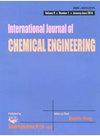Enhanced Biochar Production via Co-Pyrolysis of Biomass Residual with Plastic Waste after Recycling Process
IF 2.4
4区 工程技术
Q3 ENGINEERING, CHEMICAL
引用次数: 0
Abstract
Biomass pyrolysis for oil production results in biochar byproduct, whose characteristics can be improved by the reuse of waste plastics. While the plastic recycling process leads to a large amount of plastic waste that cannot be reused, this underutilized feedstock holds the potential for coprocessing with biomass, thereby increasing the likelihood of producing valuable biochar products. This study sought to evaluate how the inclusion of plastic waste influences the pyrolysis of biomass residue. To this end, sawdust and hardwood biomass were chosen as materials to investigate how the presence of plastics might alter the properties of the resulting chars. Synergies were observed among the biomass components, particularly in samples with higher lignin content from hardwood biomass, which resulted in increased biochar yields. The results showed that a 20% blend of plastic waste with wood at 300°C produced a solid char with a yield of 40% by weight. Co-pyrolysis of the biochar derived from blends of 20 wt. % PP with both sawdust and hardwood resulted in significant enhancement of various properties of the resulting biochar, including surface area, carbon content, hydrophobicity, and aromaticity. This enhancement had a favorable effect on the carbon content and calorific values of the biochar. These enhanced properties significantly contributed to the biochar’s capacity for sorbing substances like various heavy metals. It can be proved that this result showed the importance of the energy content of biochar and its potential use for renewable applications. The beneficial combined effect seen in the plastic blends can be credited to the interaction between the biomass and polymer components, resulting in the production of fewer volatile products at higher temperatures. It can be suggested that biochar from biowaste and plastic waste not only reduces environmental impact but also converts it into a valuable and eco-friendly product.通过生物质残余物与回收处理后的塑料废弃物协同热解提高生物炭产量
生物质热解产油会产生生物炭副产品,而废塑料的再利用可以改善生物炭的特性。虽然塑料回收过程会产生大量无法再利用的塑料废料,但这种未充分利用的原料具有与生物质共处理的潜力,从而增加了生产有价值生物炭产品的可能性。本研究试图评估塑料废弃物的加入如何影响生物质残渣的热解。为此,研究人员选择了锯末和硬木生物质作为材料,以研究塑料的存在会如何改变所产生的炭的特性。研究观察到了生物质成分之间的协同作用,尤其是硬木生物质中木质素含量较高的样本,这导致生物炭产量增加。结果表明,在 300°C 的温度下,将 20% 的塑料废料与木材混合,可产生重量百分比为 40% 的固体炭。将 20% 的聚丙烯与锯屑和硬木混合后产生的生物炭进行共热解,可显著提高生物炭的各种特性,包括表面积、含碳量、疏水性和芳香性。这种提高对生物炭的含碳量和热值产生了有利影响。这些增强的特性大大提高了生物炭吸附各种重金属等物质的能力。可以证明,这一结果表明了生物炭能量含量的重要性及其在可再生应用中的潜在用途。塑料混合物中出现的有益综合效应可归功于生物质和聚合物成分之间的相互作用,从而在较高温度下产生较少的挥发性产物。可以说,从生物废料和塑料废料中提取生物炭不仅能减少对环境的影响,还能将其转化为有价值的环保产品。
本文章由计算机程序翻译,如有差异,请以英文原文为准。
求助全文
约1分钟内获得全文
求助全文
来源期刊

International Journal of Chemical Engineering
Chemical Engineering-General Chemical Engineering
CiteScore
4.00
自引率
3.70%
发文量
95
审稿时长
14 weeks
期刊介绍:
International Journal of Chemical Engineering publishes papers on technologies for the production, processing, transportation, and use of chemicals on a large scale. Studies typically relate to processes within chemical and energy industries, especially for production of food, pharmaceuticals, fuels, and chemical feedstocks. Topics of investigation cover plant design and operation, process design and analysis, control and reaction engineering, as well as hazard mitigation and safety measures.
As well as original research, International Journal of Chemical Engineering also publishes focused review articles that examine the state of the art, identify emerging trends, and suggest future directions for developing fields.
 求助内容:
求助内容: 应助结果提醒方式:
应助结果提醒方式:


